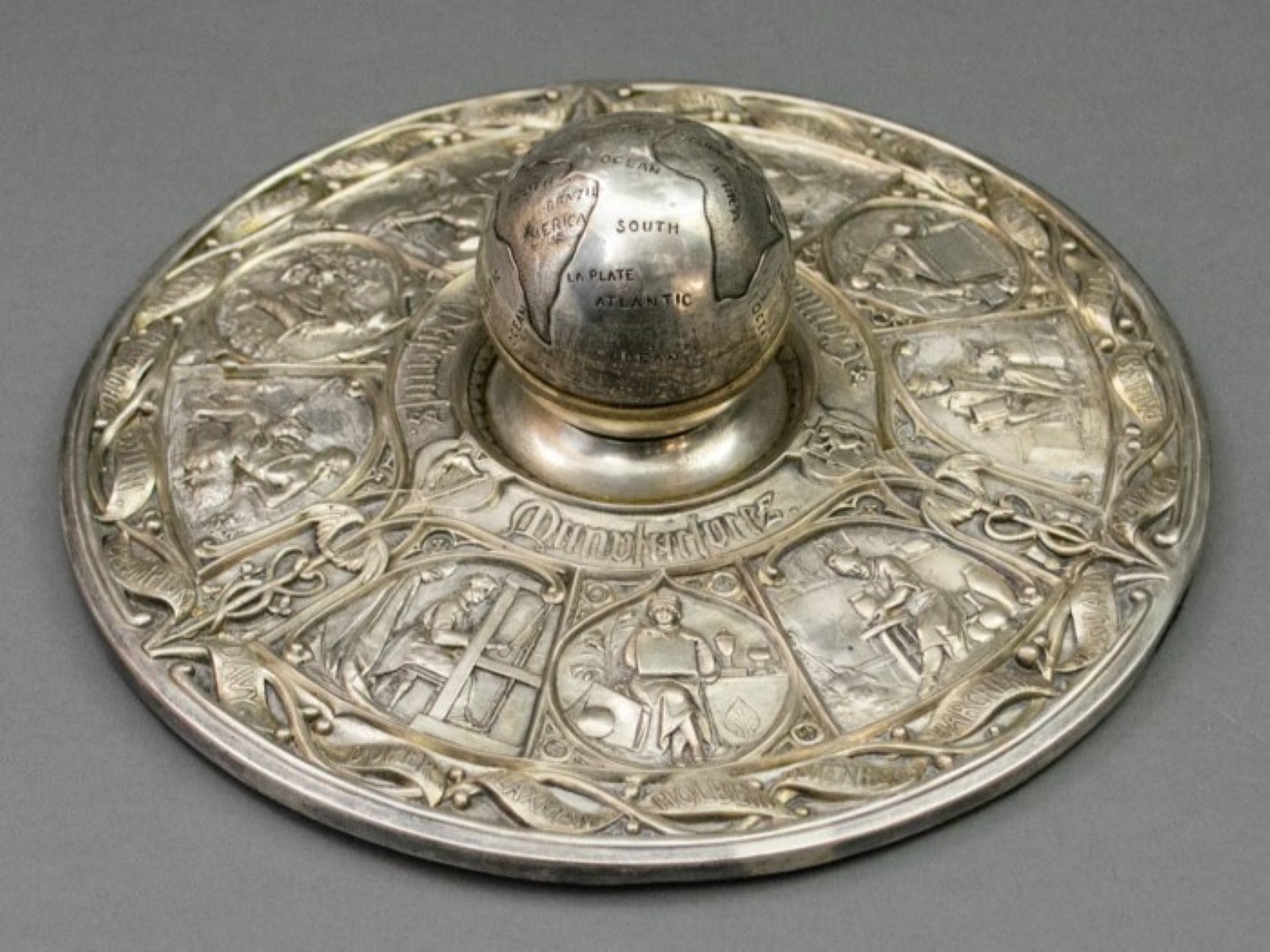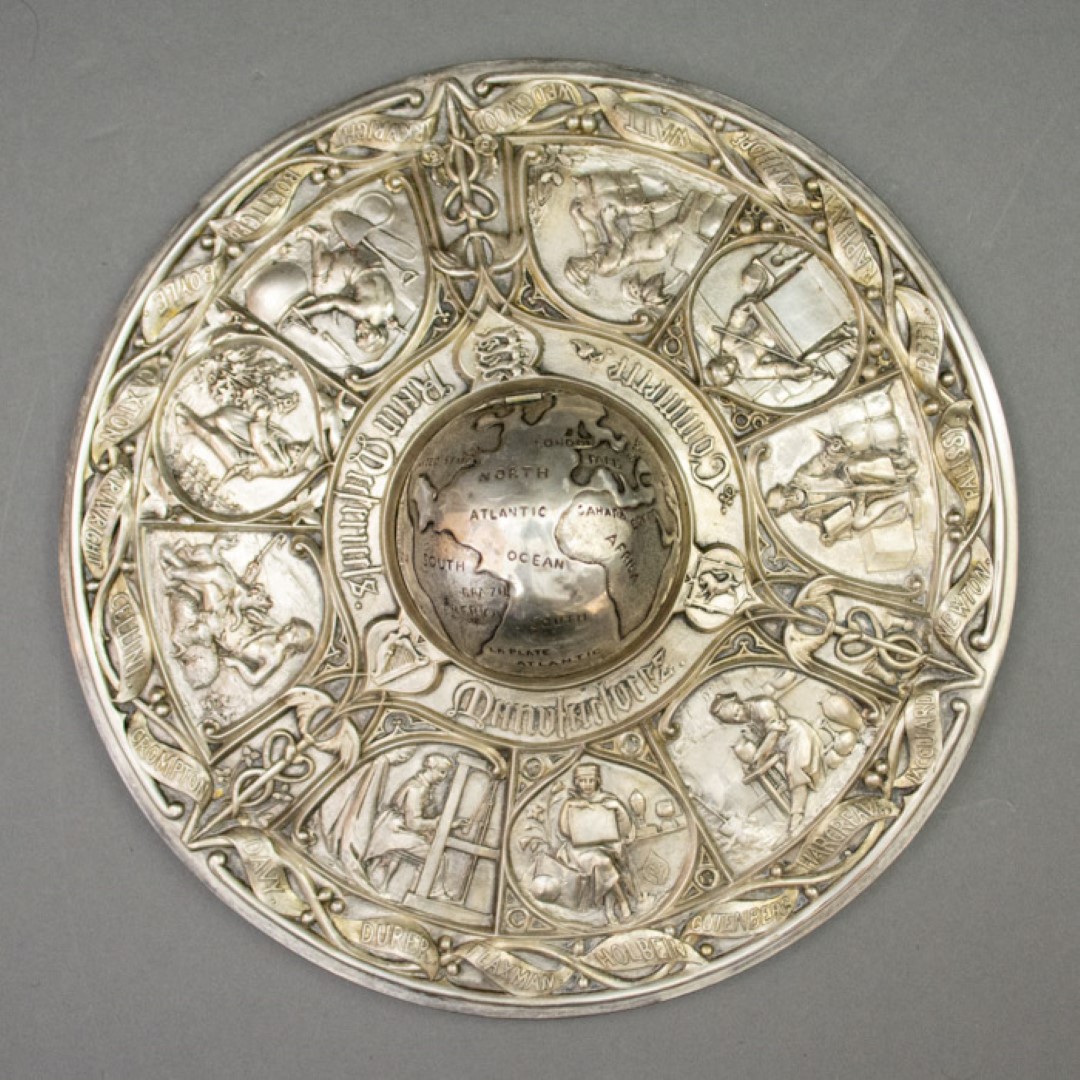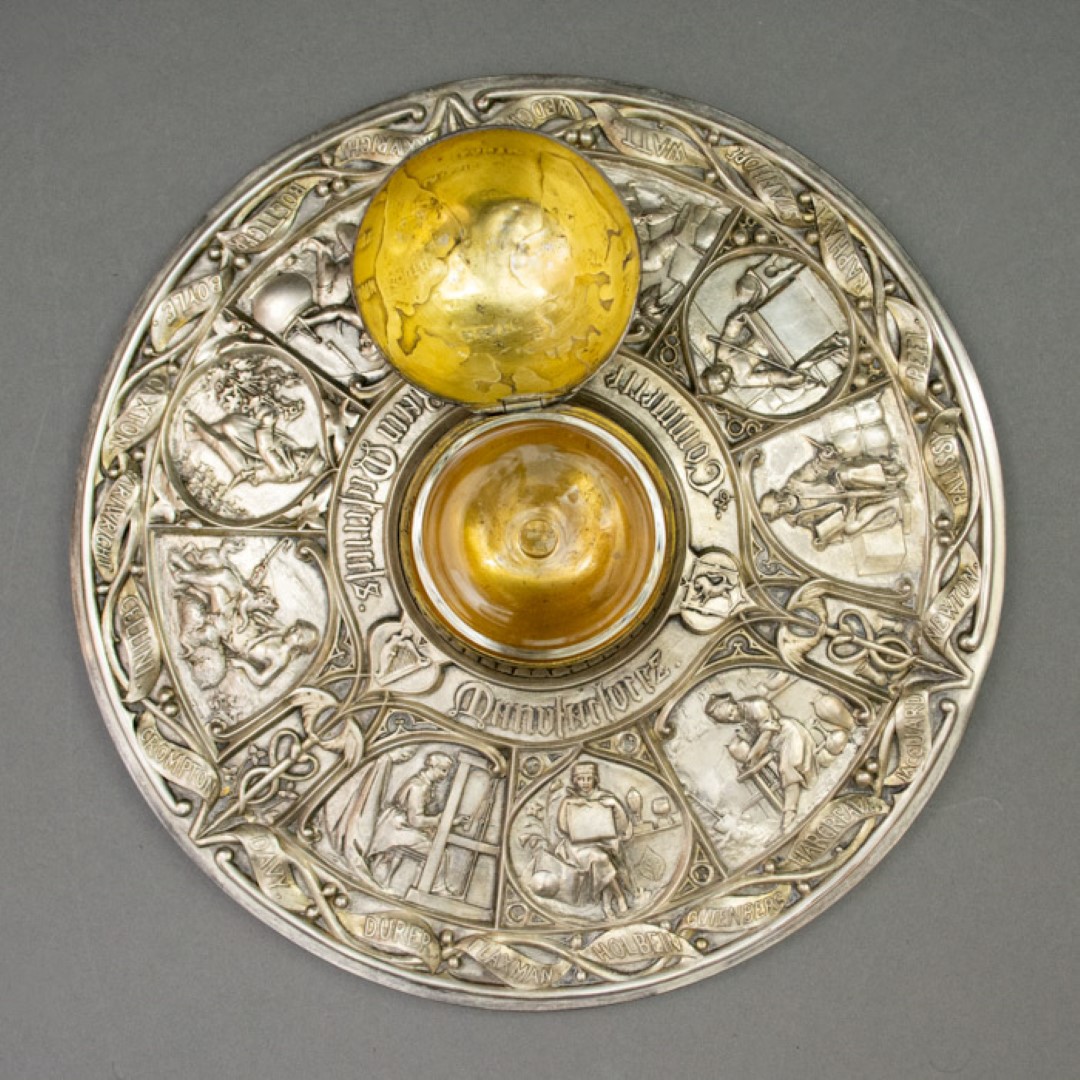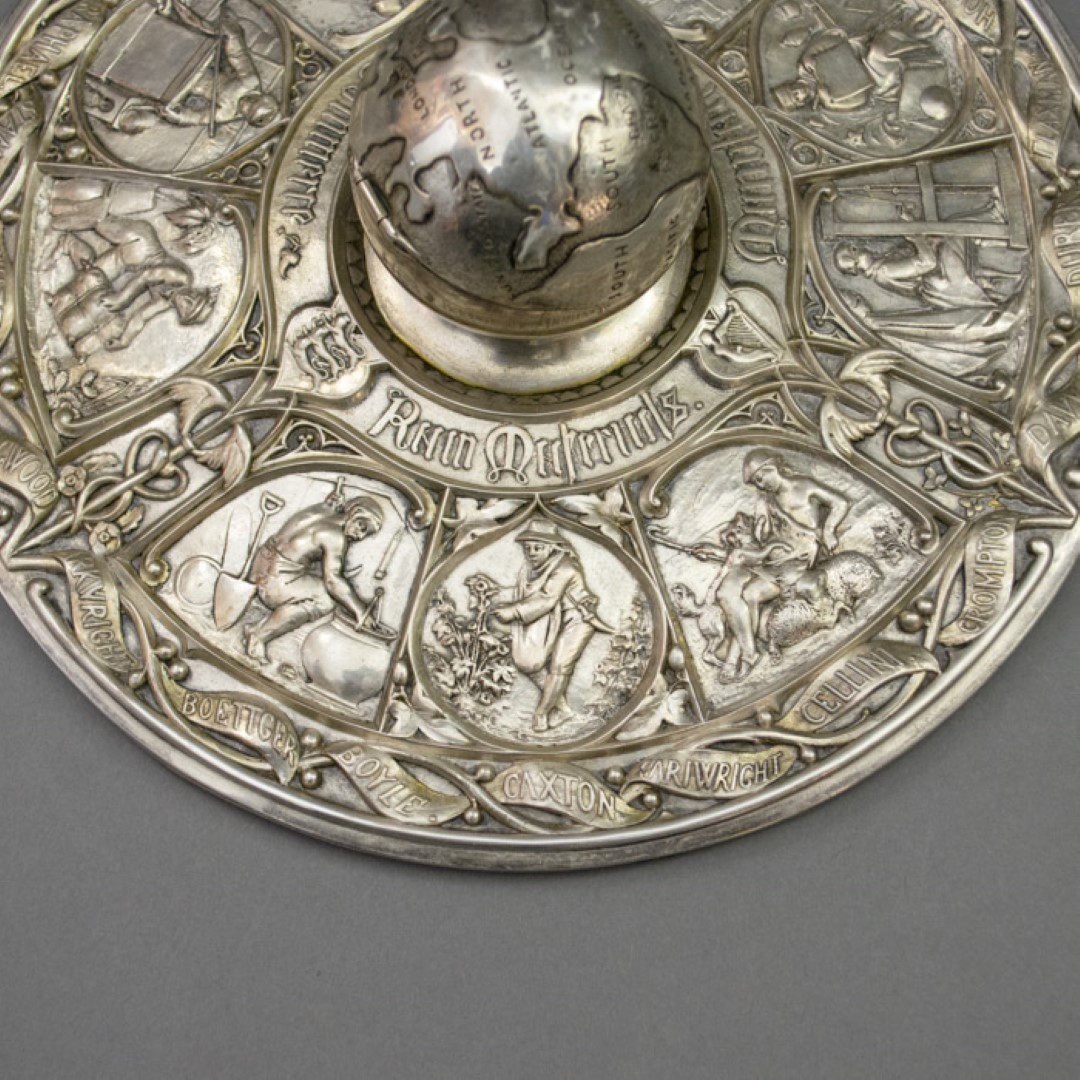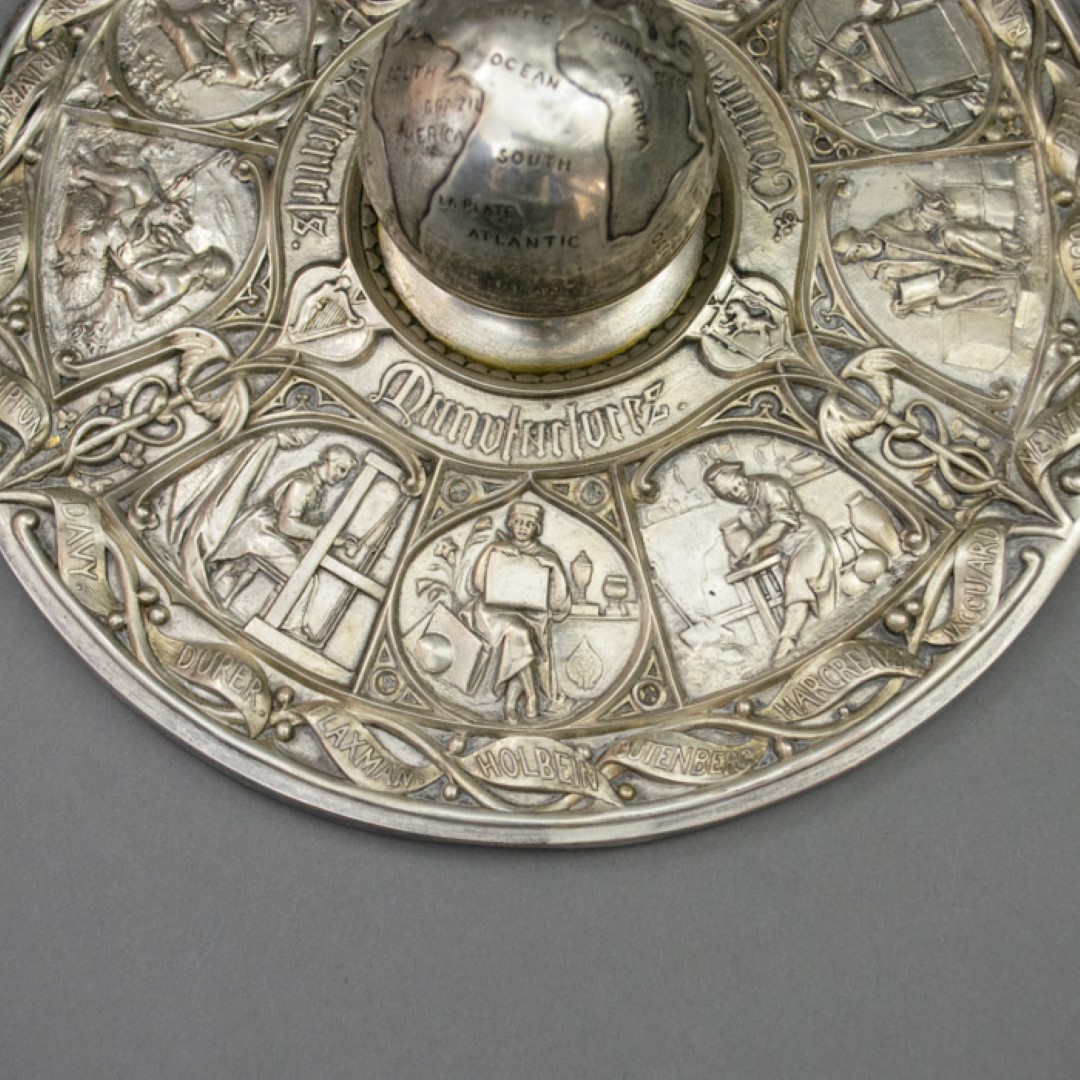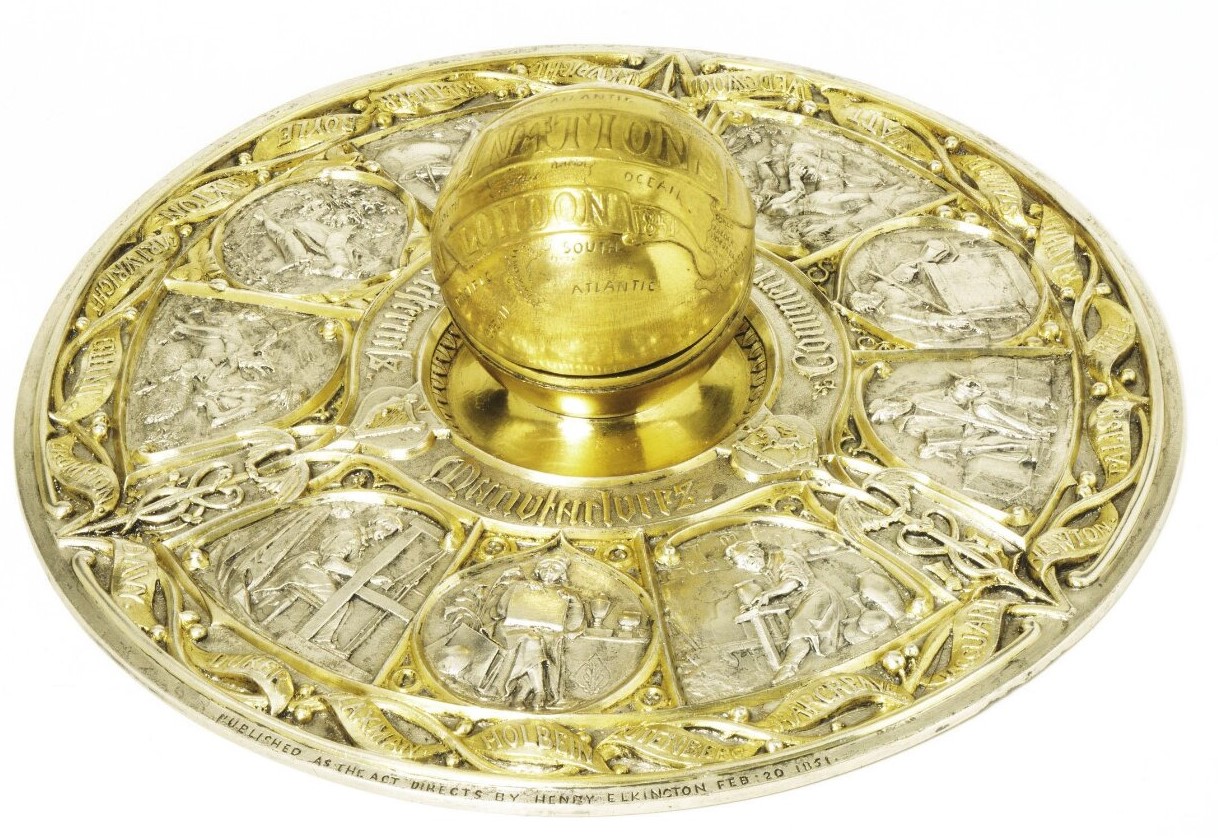
Great Exposition of 1851
| Categories | Souvenir |
| Type | World's Fair |
| Material | Silverplate |
| Markings | See narrative |
| Manufacturer | Elkington & Co |
| Origin | England |
| Date or Era | circa 1850 |
| Measuring | 5 inches high, 9 inches diameter overall |
Commemorative inkwell produced for the Great Exhibition of 1851 comprised of a silver-gilt terrestrial globe with gilt interior opening to reveal a blown glass inkwell within. It is mounted in the center of a circular silver-plated repoussé base having allegorical vignettes of Raw Materials, Commerce, and Manufacturers. On the base, each category is labeled in Gothic lettering and represented by three illustrations: Raw Materials by a man at a cauldron, a farmhand picking sugar cane, and a sheepherder; Manufacturers by a weaver at a loom, an artist drawing, and a potter; and Commerce by a man with a ledger and pen beside a wrapped parcel, a person apparently laying out a bolt of cloth, and a man moving the parcel in a tropical landscape. The vignettes are separated by elaborate Gothic borders, with three caducei separating the categories. The inkstand was made by Elkington & Co. and was gilded by electric current, an innovative process at the time. There is one in the collection of London’s Victoria & Albert Museum that was donated by its designer, John Leighton.
The rim is decorated with a vine and banner border bearing the names of renowned artists, inventors, and designers throughout history: Arkwright, Boettger, Boyle, Caxton, Cartwright, Cellini, Crompton, Davy, Durer, Flaxman, Holbein, Gutenberg, Hargreave, Jacquard, Newton, Palissy, Peel, Raphael, Stanhope, Watt, and Wedgwood.
The Great Exhibition of the Works of Industry of All Nations was held from May to October 1851 in the Crystal Palace, a building constructed for the event in Hyde Park, London. Queen Victoria and Albert, Prince Consort, were present at the opening of the exhibition, an international showcase of manufactured products that also included exhibits of raw materials and machinery. The exhibition was part of a government initiative to maintain Britain’s competitiveness with other manufacturing nations by improving design education and inspiring the country’s workforce. The inkwell design aligns very clearly with the goals of the exhibition.
John Leighton was a British designer and illustrator who worked under the pseudonym Luke Limner. He designed stained glass, ceramics and book bindings. Leighton designed a commemorative inkstand for the Great Exhibition of 1851 in London that was produced in brass and silver-plated copper by Elkington and Co.; the design also appeared as a metal plaque on the cover of the Art Journal catalog of the Great Exhibition.
Elkington & Co. was a British firm manufacturing mainly electroplated domestic wares. It was founded in Birmingham, England, sometime between 1829 and 1836 by George Richards Elkington (1801-1865) and his cousin Henry Elkington (1810-1852). In 1836, the Elkingtons took out the first of many patents for new methods of gilding and plating, including one that covered the electroplating process which gave them control over its exploitation, followed by patents in other countries. When the firm was successfully established, it employed French sculptors and designers and became one of the largest producers of silver objects in England, which were manufactured in a large factory in Birmingham.
Edge of rim with maker’s insignia and inscribed “Elkington & Co. 921.”
This inkwell is on display at the Victoria and Albert Museum (see last picture of this listing):
Commemorative Inkstand | V&A Explore The Collections (vam.ac.uk)
Estimated value: $500
Content disclaimer. The information posted is the owner’s best knowledge and may not have been vetted by the SOIC. We welcome comments, corrections, and additions, working to make our website information comprehensive and accurate.
Join the Society of Inkwell Collectors (SOIC) – it’s free!
Founded in 1981 as a non-profit organization,
we are documenting inkwells (and accessories).
We’re here to help and inform!
